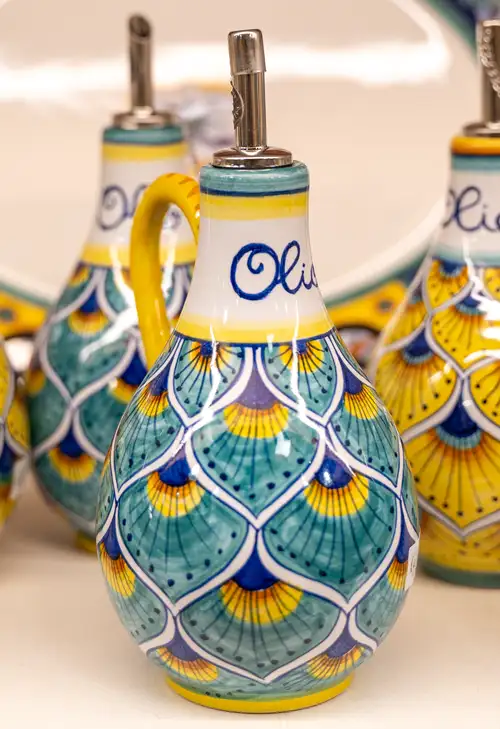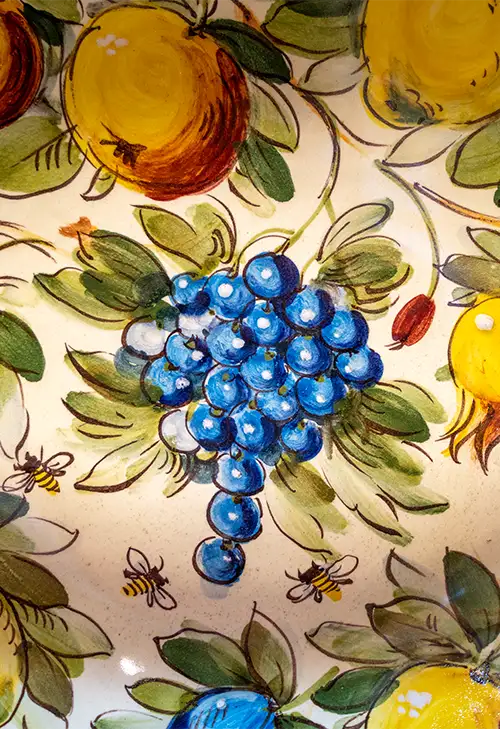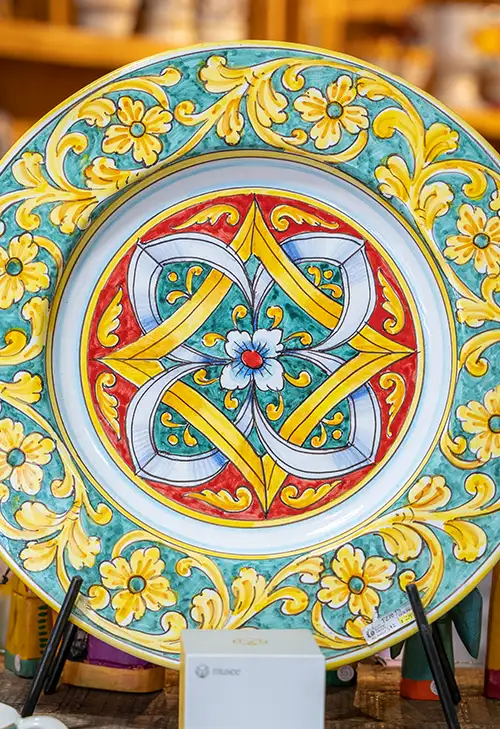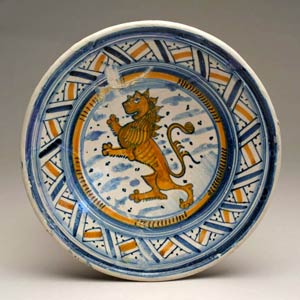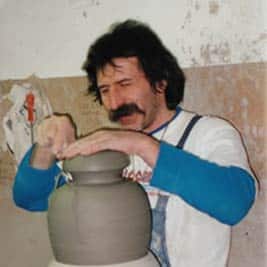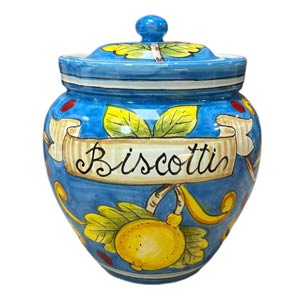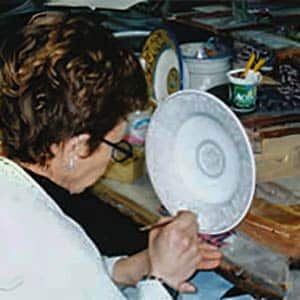
Santo Stefano Original Kiln
The basic raw material, red clay or chalky clay, was dug from river-beds or pits, impurities were removed and the clay was kneaded before being thrown on a potter’s wheel or pressed into plaster molds. Complicated forms were made in more than one section and were assembled using slip (a form of liquid clay) to make the parts adhere. The first firing was in a wood fuelled brick kiln at 1000 degrees centigrade.
After removal from the kiln, the items were ready for glazing. They were dipped in a tin glaze or “bianco” (white). After drying, a powdery white coating developed on the surface and the items were then ready for painting. The colored glazes were made from metallic oxides: cobalt for blue, copper for green, antimony for yellow, manganese for purplish-brown and tin for white. The painters sat at tables with pots of pigment and painted the now white pieces using animal-hair brushes. The painting had to be perfect because the pigment sank into the glaze and mistakes could not be corrected. Furthermore, the pigments did not appear in their true colors until they were fired, so it was difficult to get an accurate sense of the finished product.
The technical skill needed to paint on these wares inspired great pride and some ceramicists signed their vessels with their names, initials, workshop or city, at a time when few painters or sculptors did the same. When the painting was complete the pieces were fired again at a slightly lower temperature. Many of the basic techniques are the same today with a few modern advancements. If you’d like to read more about the contemporary craftsmanship of handmade Italian pottery, our blog is a great resource. Here’s a couple places to start:
Hand Painted Pottery vs. Decals



